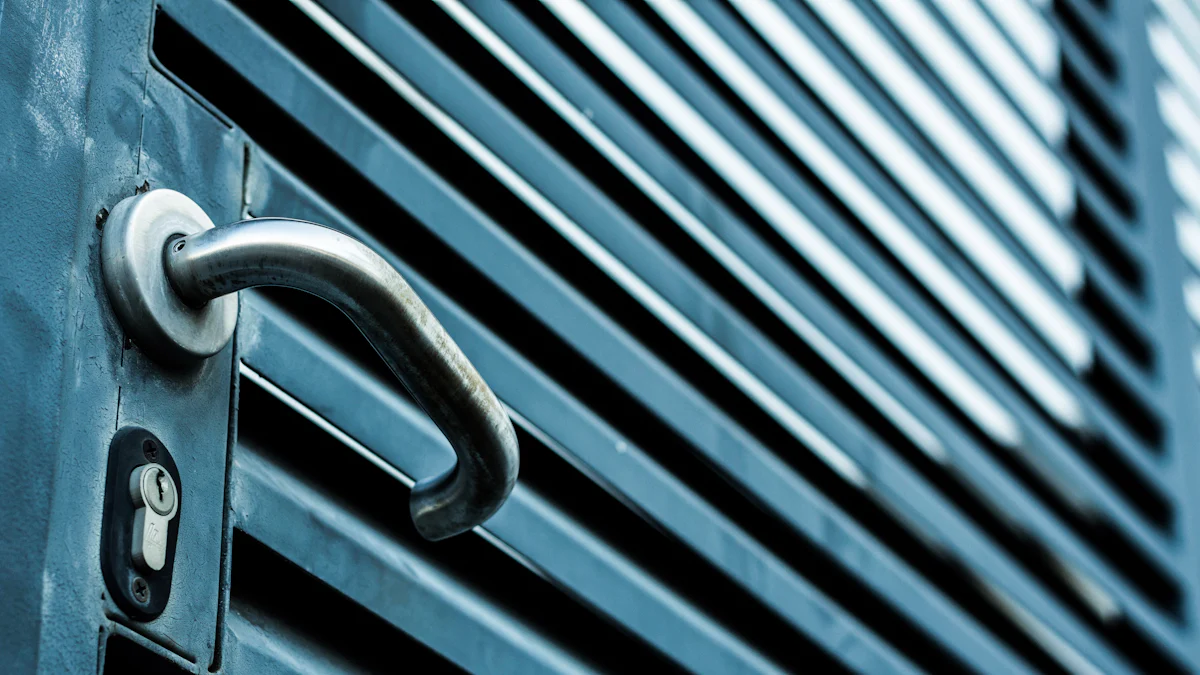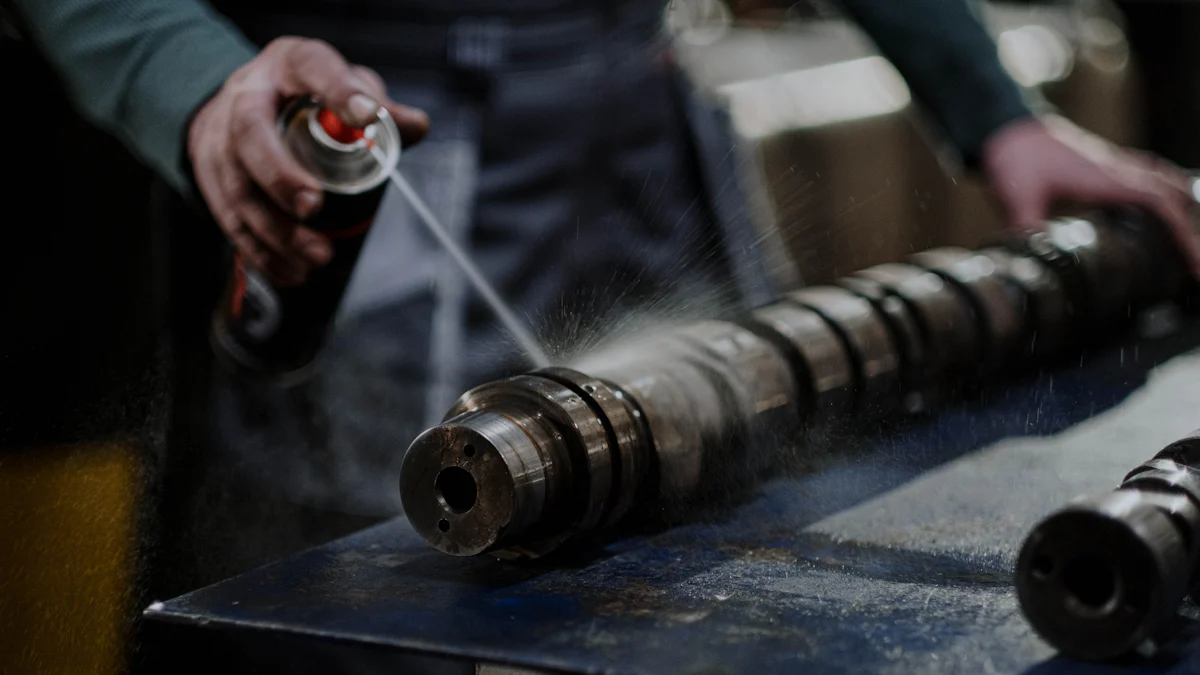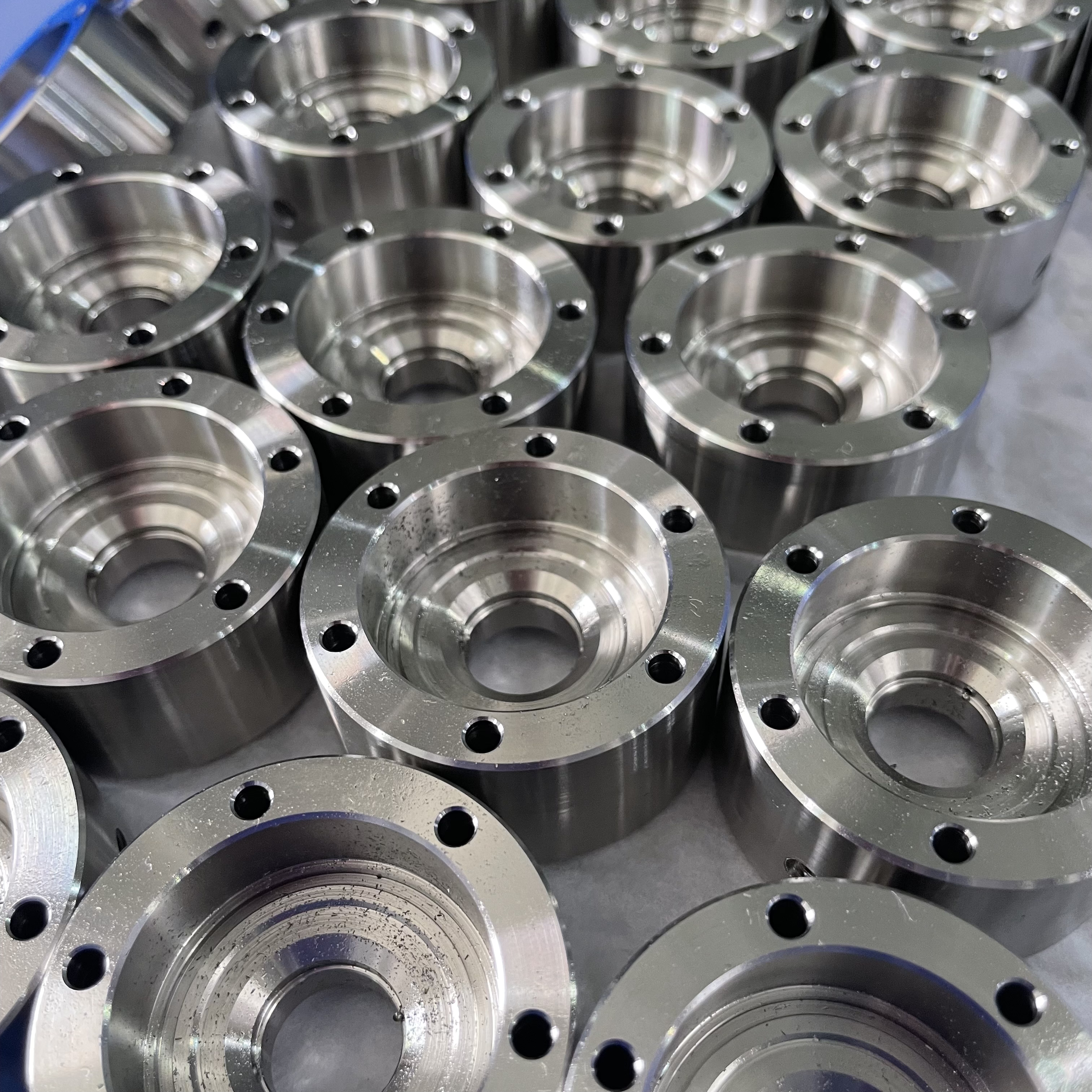How CNC Machining Improves Aluminum Surface Finishes

CNC machining transforms the way you achieve high-quality aluminum surface finishes. This advanced processing technology ensures precise control over every step, from tool movement to material removal. The result is a smooth, uniform surface finish that enhances both appearance and performance.
With CNC, you can prepare aluminum parts for anodizing, which creates a durable, corrosion-resistant layer. This process not only improves the finish but also extends the lifespan of components. Superior finishes reduce the need for additional processing, saving time and costs. Whether you prioritize aesthetics or functionality, CNC machining delivers unmatched quality and efficiency.
Key Takeaways
CNC machining allows exact control to create smooth aluminum surfaces.
Smooth aluminum lowers friction and spreads heat better, helping industries like aerospace and medical tools.
CNC machining cuts down extra steps, saving time and money.
Using diamond tools and better tool paths makes surfaces smoother and tools last longer.
Extra methods like polishing and anodizing make aluminum stronger and look better.
Why Aluminum Surface Finishes Matter
Aesthetic and Visual Appeal
The appearance of aluminum components plays a significant role in many industries. You often see aluminum used in products where visual appeal is just as important as functionality. Industries like automotive, aerospace, consumer electronics, and architectural design prioritize aluminum surface finishes to enhance brand identity and create a polished look.
Industry | Focus on Aesthetic Finishes |
|---|---|
Automotive | Yes |
Aerospace | Yes |
Consumer Electronics | Yes |
Architectural Design | Yes |
A smooth and uniform surface finish not only improves the product's visual appeal but also communicates quality and attention to detail. Whether it's a sleek smartphone casing or a high-end car part, the best surface finish ensures that the product stands out.
Functional Benefits of Smooth Surfaces
A smooth aluminum surface offers more than just good looks. It enhances the performance of components by reducing friction, improving heat dissipation, and preventing material buildup. For example, in aerospace applications, a smooth surface finish reduces drag, which improves fuel efficiency.
Additionally, smoother surfaces are easier to clean and maintain. This makes them ideal for industries like medical equipment manufacturing and restaurant fittings, where hygiene is critical. By achieving the appropriate surface finish, you ensure that the product performs optimally while meeting industry standards.
Cost Savings Through Reduced Post-Processing
CNC machining aluminum allows you to achieve the desired surface finish during the initial processing stage, minimizing the need for additional steps like sanding or polishing. This reduces production costs and shortens lead times.
Benefit | Description |
|---|---|
Minimized Waste | The system adjusts in real-time, reducing material wastage, crucial for high-cost aluminum. |
Material Efficiency | CNC removes material where needed, complementing 3D printing to reduce waste. |
Shorter Lead Times | Combining processes reduces time from concept to finished product, beneficial for prototypes. |
By using CNC machining, you can also reduce material waste. The precision of CNC ensures that only the necessary material is removed, which is especially important when working with expensive aluminum. This efficiency not only saves money but also supports sustainable manufacturing practices.
CNC Machining Techniques for Aluminum Surface Finishes

Diamond Tooling for Precision
Diamond tooling offers unmatched precision when machining aluminum. You can achieve exceptional surface finishes due to the hardness and durability of diamond tools. These tools excel at high cutting speeds, making them ideal for mass production. They also last significantly longer than traditional carbide inserts, reducing tool replacement costs.
Diamond tools handle high temperatures and cutting speeds, ensuring consistent quality during aluminum processing.
Their superior hardness allows them to cut through tough materials like carbide and ceramics.
They provide a polished surface finish, which is essential for applications requiring high visual and functional standards.
Diamond tools last 30-50 times longer than carbide tools, ensuring durability and cost-effectiveness.
By using diamond tooling, you can achieve a smoother surface finish while maintaining high performance and efficiency. This technique is particularly beneficial for industries like aerospace and automotive, where precision and quality are critical.
High RPM and Feed Rates for Smoother Cuts
High rotational speeds (RPM) and optimized feed rates play a crucial role in achieving a flawless aluminum surface finish. When you increase the RPM, the cutting tool interacts with the material more frequently, resulting in finer cuts. This reduces the chances of visible tool marks and enhances the overall surface quality.
Using high feed rates ensures faster material removal without compromising the finish. However, balancing these parameters is essential. Excessive feed rates can lead to rough surfaces, while overly low rates may cause inefficiencies. By fine-tuning these settings, you can achieve a perfect balance between speed and quality. This approach is especially effective in CNC milling, where precision and surface finish are paramount.
Coolant and Lubrication for Heat Management
Coolants and lubricants are indispensable for maintaining the quality of aluminum surface finishes during CNC machining. They help manage heat generated during high-speed processing, preventing thermal expansion and tool wear.
Coolants reduce temperatures on both the cutting tool and the workpiece, ensuring consistent performance.
They assist in clearing chips from the cutting area, which prevents surface imperfections caused by recutting.
Lubricants protect tools and parts from corrosion, contributing to a smoother machining process.
By incorporating proper coolant and lubrication techniques, you can enhance the surface finish while extending the lifespan of your tools. This practice also minimizes defects like burrs and adhesion, ensuring a high-quality final product.
Toolpath Optimization to Minimize Marks
Toolpath optimization plays a critical role in achieving a flawless surface finish during CNC machining. By carefully planning the movement of the cutting tool, you can minimize tool marks and ensure a smooth, high-quality surface. This step is essential for improving both the appearance and performance of aluminum components.
When you optimize the toolpath, you reduce unnecessary tool movements that can leave visible marks on the surface. For example, overlapping tool passes or abrupt changes in direction often create imperfections. A well-planned toolpath ensures consistent material removal, which enhances the overall finish.
Using advanced CNC software, you can simulate the machining process before actual processing begins. This allows you to identify potential issues, such as tool chatter or uneven cuts, and make adjustments. By refining the toolpath, you improve the quality of the surface finish while reducing the need for post-processing.
Another key factor is the choice of cutting strategy. Techniques like climb milling often produce better surface finishes compared to conventional milling. Climb milling reduces the chances of material tearing, resulting in a cleaner finish. Additionally, maintaining a consistent feed rate and avoiding sudden stops or starts helps prevent surface defects.
Toolpath optimization also improves processing efficiency. By reducing redundant movements, you save time and extend the lifespan of your tools. This not only enhances the quality of the surface finish but also lowers production costs. Whether you're machining aluminum for aerospace or consumer products, a well-optimized toolpath ensures superior results every time.
Tip: Always review and test your toolpath settings before starting the machining process. Small adjustments can make a big difference in surface quality and overall performance.
Complementary Methods to Refine Aluminum Surfaces
Polishing and Buffing for Mirror-Like Finishes
Polishing and buffing are essential techniques for achieving a mirror finish on aluminum surfaces. These methods enhance both the appearance and functionality of aluminum components. Polishing removes minor imperfections, while buffing creates a reflective, high smoothness surface. You often see these techniques used in industries like medical equipment manufacturing, interior design, and retail or restaurant fittings.
Polishing and buffing improve the aesthetic appeal of aluminum by creating a mirror-like surface.
They prevent contamination and oxidation, ensuring better performance and longevity.
These methods protect aluminum from corrosive substances, extending its lifespan.
If you want to achieve a flawless mirror finish, polishing and buffing are indispensable. They not only elevate the surface quality but also ensure the aluminum meets high visual and functional standards.
Grinding and Sanding for Imperfection Removal
Grinding and sanding are effective for removing imperfections and preparing aluminum for further processing. These techniques smooth out rough edges, eliminate burrs, and create a uniform surface finish. However, grinding aluminum requires careful handling due to safety concerns.
Take frequent breaks to cool down the aluminum and grinding wheel.
Clean the grinding wheel regularly to avoid contamination.
Ensure proper ventilation to dissipate fumes and dust.
Dispose of aluminum dust in fire-resistant containers.
Wear safety goggles, gloves, and a dust mask for protection.
Grinding aluminum generates combustible dust and heat, which can pose fire hazards. By following safety protocols and using personal protective equipment, you can achieve a high-quality surface finish without compromising safety.
Anodizing and Coating for Enhanced Durability
Anodizing is a powerful method to enhance the durability of aluminum surfaces. This process thickens the natural oxide layer on aluminum, improving its resistance to wear and corrosion. The anodized layer acts like a ceramic shield, protecting the aluminum from environmental damage.
Anodizing increases wear resistance, making the surface less prone to scratches and nicks.
It enhances corrosion resistance, safeguarding the aluminum from moisture and chemicals.
The process creates a durable, anodized surface that maintains its quality over time.
However, achieving a consistent anodized finish requires proper preparation. Inadequate surface preparation or unstable bath chemistry can lead to defects. By addressing these challenges, you can ensure the anodized aluminum meets the highest standards of surface quality and performance.
Real-World Application: CNC Machining Aluminum for Aerospace

Importance of Surface Finish in Aerospace Components
In aerospace, the surface finish of aluminum components directly impacts their functionality and reliability. You must meet strict surface finish requirements to ensure optimal performance under extreme conditions. For example, turbine blades require specific treatments like shot peening to achieve a roughness of around 100in Ra, enhancing their resistance to high temperatures. Similarly, polished exterior surfaces with roughness values below 20in Ra reduce aerodynamic drag, improving fuel efficiency. Landing gear components often undergo hard chrome plating, resulting in roughness between 16 to 64in Ra, which balances wear resistance and lubrication retention.
Surface Finish Type | Typical Values (Ra) | Description |
|---|---|---|
Surface Roughness | 8 Ra | Standard for most parts |
Waviness | Varies | Periodic variations in surface finish |
Lay Pattern | Circular, Parallel, Perpendicular, Cross-hatched | Direction of dominant texture pattern |
These precise requirements highlight the critical role of surface finish in ensuring the safety and efficiency of aerospace components.
Techniques Used in Aerospace CNC Machining
To achieve superior surface finishes, you can rely on advanced CNC machining techniques. Five-axis CNC machining allows you to create complex geometries in a single setup, reducing errors and improving precision. High-speed machining (HSM) increases cutting speeds, enabling faster production while maintaining high-quality finishes. These methods are particularly effective for processing aluminum and other lightweight materials used in aerospace.
Additional finishing techniques like anodizing, thermal spray coating, and electroplating further enhance the durability and performance of aerospace components. For instance, anodizing creates a protective oxide layer on aluminum, improving its resistance to corrosion and wear. Grinding and polishing refine the surface, ensuring it meets the stringent standards required in aerospace applications.
Benefits of Superior Surface Finishes in Aerospace
High-quality surface finishes offer measurable benefits in aerospace applications. Smooth internal surfaces in turbo housings improve airflow and reduce friction, enhancing the efficiency of turbochargers. Polished exterior surfaces minimize turbulence and pressure losses, leading to better aerodynamic performance. Superior finishes also reduce friction between moving parts, decreasing wear and tear.
By achieving a flawless surface finish, you extend the lifespan of components and reduce maintenance costs. Protective coatings like anodizing and plating prevent corrosion, ensuring long-term durability. These benefits not only improve the performance of aerospace systems but also contribute to safer and more cost-effective operations.
Tip: Always prioritize surface finish quality during CNC machining aluminum for aerospace. It ensures your components meet industry standards and perform reliably under demanding conditions.
CNC machining offers a reliable way to achieve superior aluminum surface finishes. By using advanced tools and techniques, you can enhance the quality, appearance, and performance of aluminum components. Complementary methods like polishing and anodizing further refine the surface. Polishing creates a high-gloss finish, while anodizing improves corrosion resistance and allows for aesthetic customization. Industries such as electronics, medical devices, and marine applications rely on CNC for precise and durable aluminum finishes. Whether you prioritize functionality or aesthetics, CNC machining ensures consistent processing and exceptional results.
FAQ
What is the ideal surface finish for aluminum components?
The ideal surface finish depends on the application. For decorative purposes, a mirror-like finish works best. Functional parts, like aerospace components, often require smooth finishes with low roughness values (e.g., below 20 Ra) to reduce friction and improve performance.
How does CNC machining improve aluminum surface finishes?
CNC machining enhances surface finishes by using precise tools, optimized toolpaths, and high-speed cutting techniques. These methods reduce imperfections, minimize tool marks, and create smooth, uniform surfaces. You can achieve superior finishes without extensive post-processing.
Can you anodize CNC-machined aluminum parts?
Yes, anodizing works well on CNC-machined aluminum. The smooth surface created by CNC machining ensures better adhesion of the anodized layer. This process improves corrosion resistance, durability, and appearance, making it ideal for both functional and decorative applications.
What are the benefits of using diamond tooling for aluminum?
Diamond tooling provides exceptional precision and durability. It creates smoother finishes, lasts longer than traditional tools, and handles high cutting speeds. You can achieve polished surfaces with minimal tool wear, making it cost-effective for high-quality production.
Why is coolant important during CNC machining?
Coolant prevents overheating during machining. It reduces heat buildup, clears chips, and protects the cutting tool and workpiece. By using coolant, you can avoid surface defects like burrs and ensure a consistent, high-quality finish.
Tip: Always choose the right coolant for aluminum to maximize its benefits.
See Also
Uncovering Benefits of CNC Machining for Aluminum Parts
Proven Strategies for Flawless CNC Machining of Aluminum
Expert Insights on Surface Treatment in CNC Machining
About US
Follow Us
Your prototype holds unparalleled significance, and we deeply value its uniqueness. Collaborating with you during the preparation phase for running your prototype or parts is a commitment we gladly embrace. Whether it's a single part or a complex assembly, we are dedicated to selecting the optimal tools and pathways to bring your envisioned product to life.
At Precision Fab CNC Machining, we specialize in producing parts for prototypes, short runs, and high-volume production. Our prototyping machine capabilities extend across metal, plastic, and wood machining, with welding fabrication services available to complement and finalize your prototype if required.
Address
Address: Room320 10F, Building A,Nanshan international building, Dayawan District, Huizhou, Guangdong, 516001 China
Contacts
billy@timaycnc.com

